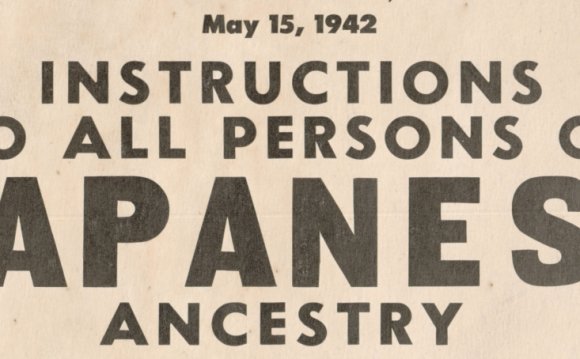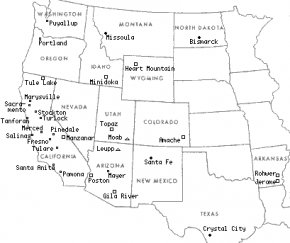
 Amache (Granada), CO Opened August 12, 1942.Closed November 10, 1945.
Amache (Granada), CO Opened August 12, 1942.Closed November 10, 1945.
Peak population 10, 767.
On February 19th 1942 Roosevelt signed Executive Order 9066. Under the terms of the Order, some 120, 000 people of Japanese descent living in the US were removed from their homes and placed in internment camps. The US justified their action by claiming that there was a danger of those of Japanese descent spying for the Japanese. However more than two thirds of those interned were American citizens and half of them were children. None had ever shown disloyalty to the nation. In some cases family members were separated and put in different camps. During the entire war only ten people were convicted of spying for Japan and these were all Caucasian.
Life in the camps was hard. Internees had only been allowed to bring with then a few possessions. In many cases they had been given just 48 hours to evacuate their homes. Consequently they were easy prey for fortune hunters who offered them far less than the market prices for the goods they could not take with them.
"It was really cruel and harsh. To pack and evacuate in forty-eight hours was an impossibility. Seeing mothers completely bewildered with children crying from want and peddlers taking advantage and offering prices next to robbery made me feel like murdering those responsible without the slightest compunction in my heart." Joseph Yoshisuke Kurihara speaking of the Terminal Island evacuation.
They were housed in barracks and had to use communal areas for washing, laundry and eating. It was an emotional time for all. "I remember the soldiers marching us to the Army tank and I looked at their rifles and I was just terrified because I could see this long knife at the end . . . I thought I was imagining it as an adult much later . . . I thought it couldn't have been bayonets because we were just little kids." from "Children of the Camps"
Some internees died from inadequate medical care and the high level of emotional stress they suffered. Those taken to camps in desert areas had to cope with extremes of temperature.
The camps were guarded by military personnel and those who disobeyed the rules, or who were deemed to be troublesome were sent to the Tule Lake facility located in the North California Cascade Mountains. In 1943 those who refused to take the loyalty oath were sent to Tula Lake and the camp was renamed a segregation centre.
In 1943 all internees over the age of seventeen were given a loyalty test. They were asked two questions:
1. Are you willing to serve in the armed forces of the United States on combat duty wherever ordered? (Females were asked if they were willing to volunteer for the Army Nurse Corps or Women's Army Corps.)
RELATED VIDEO












